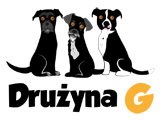
We teach behaviors, not constructs or lack of behavior. Sounds simple, doesn’t it? But in reality we focus so much on teaching concepts, labels, and abstract ideas that we forget what is really important.
Behavior is our focus. It doesn’t mean emotions are not happening, we are simply unable to measure them. They are crucial and extremely important part of dog’s life but we can only alter them by working on behavior. That’s why we should focus on behavior and rules by which it is governed. This also implies ethical approach, as dogs are unable to use verbal behavior to explain how they feel in the moment, we should be even more careful with the methods we use. That’s why our first hand choice should always be positive reinforcement.
We like to label, we like to give names to the sets of behaviors like for example: impulse control, self-control, drive and high or low drive dogs, low motivation and high motivation dogs, fragile dogs. What we often like to forget is that behind those labels, there are certain behavior. Measurable, visible behaviors. Behaviors we can alter either by changing antecedent or consequence. We can assume we also change emotions related to that behavior, but this is just an assumption, and it can be wrong. Until we get rid of labels and give ourselves a clear description of what really is a high drive dog, or impulse control, we can’t teach it. We can’t teach something we can’t measure, because how will I now if I have it, if I don’t know how it looks like. I can’t teach a beautiful heeling until I now what exact parameters I have in mind. When we say self- control, what do we mean by it? Is a sitting dog a dog with impulse control? Maybe yes, but maybe not. What we often name by a construct is a behavior, is stimulus control.

I often hear about people saying they teach a dog not to react on a certain stimuli. You can’t teach lack of behavior. You simply teach another behavior and replace the unwanted one. Organizm is always behaving, you can’t teach a dog not to. When you say that you want your dog NOT to jump on you, consider first what you want him to do in the first place. Then teach it.
If you have an issue with motivation, analyze behavior, analyze environment, get to know antecedents, consequences and what impact they have on targeted behavior. Don’t look into the mystical concepts but rather focus on what you can really change. This way you can truly be effective.
Constructs are not effective way of training, they very easily take you to explanatory fiction. Try to see what is available for you, if you name it that’s okay but you need to know what is behind the label. Don’t use labels and constructs to explain phenomena. Don’t say you have to feel it, to understand it, because “Just feel it!” Is what people who don’t mind doing things wrong will say, frequently.
